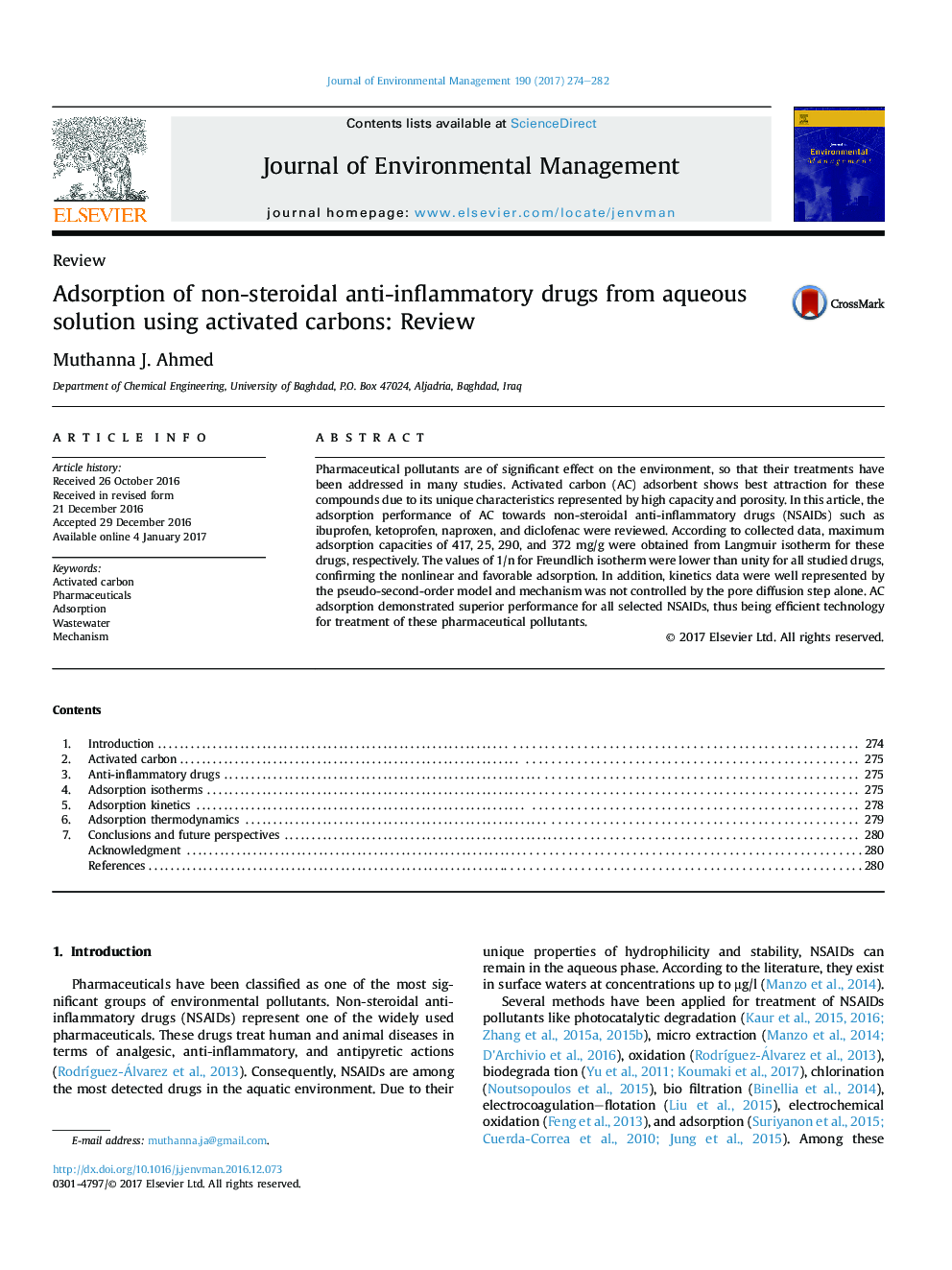| Article ID | Journal | Published Year | Pages | File Type |
|---|---|---|---|---|
| 5116906 | Journal of Environmental Management | 2017 | 9 Pages |
â¢Adsorption of NSAIDs pollutants on activated carbons (ACs) has been reviewed.â¢Ibuprofen, ketoprofen, naproxen, and diclofenac drugs were tested.â¢High capacities of ACs towards diclofenac were reported compared to others.â¢Initial adsorbate concentration and ACs dose were of high effect on adsorption.â¢Future perspectives in this direction have been proposed.
Pharmaceutical pollutants are of significant effect on the environment, so that their treatments have been addressed in many studies. Activated carbon (AC) adsorbent shows best attraction for these compounds due to its unique characteristics represented by high capacity and porosity. In this article, the adsorption performance of AC towards non-steroidal anti-inflammatory drugs (NSAIDs) such as ibuprofen, ketoprofen, naproxen, and diclofenac were reviewed. According to collected data, maximum adsorption capacities of 417, 25, 290, and 372Â mg/g were obtained from Langmuir isotherm for these drugs, respectively. The values of 1/n for Freundlich isotherm were lower than unity for all studied drugs, confirming the nonlinear and favorable adsorption. In addition, kinetics data were well represented by the pseudo-second-order model and mechanism was not controlled by the pore diffusion step alone. AC adsorption demonstrated superior performance for all selected NSAIDs, thus being efficient technology for treatment of these pharmaceutical pollutants.
Graphical abstractDownload high-res image (57KB)Download full-size image
